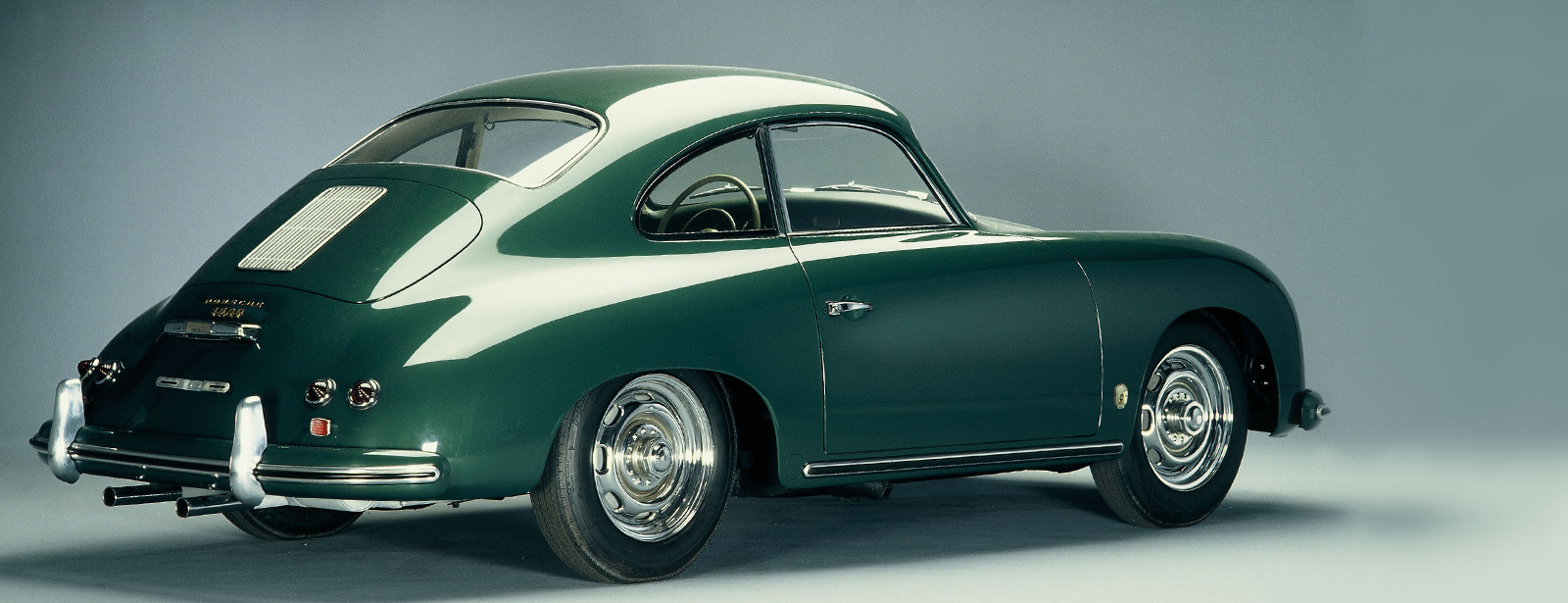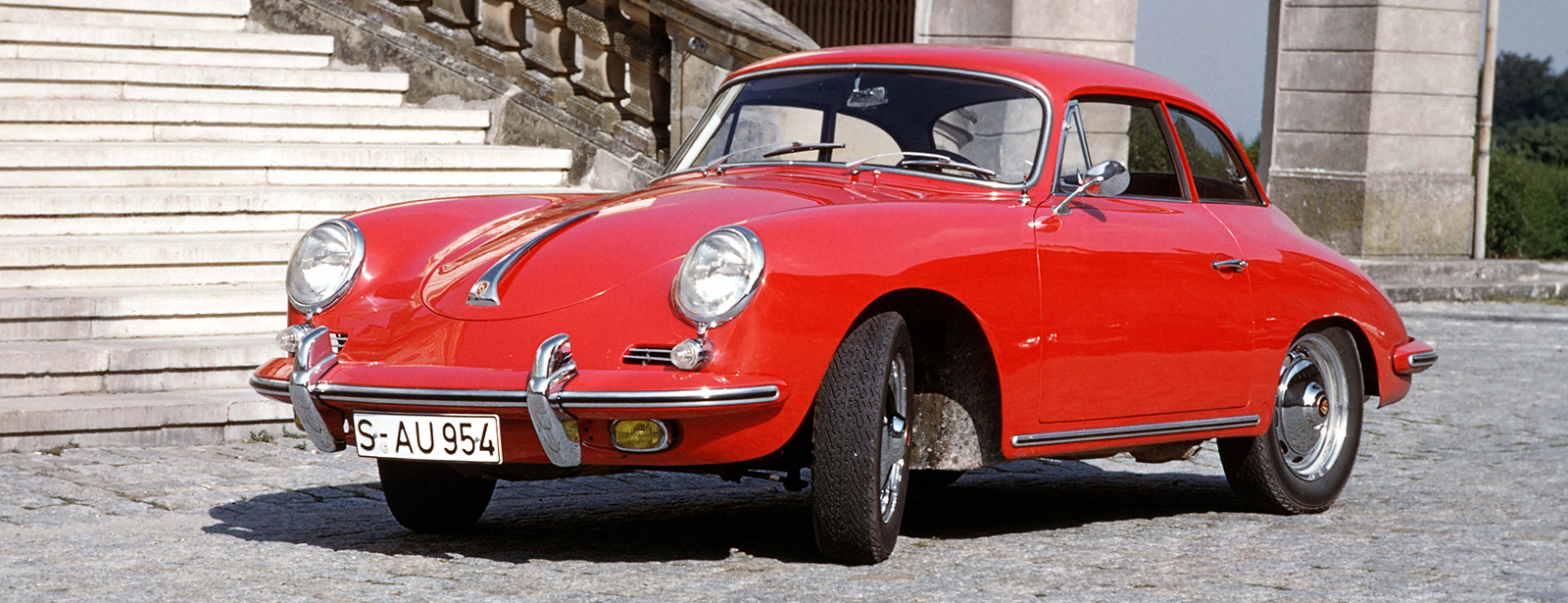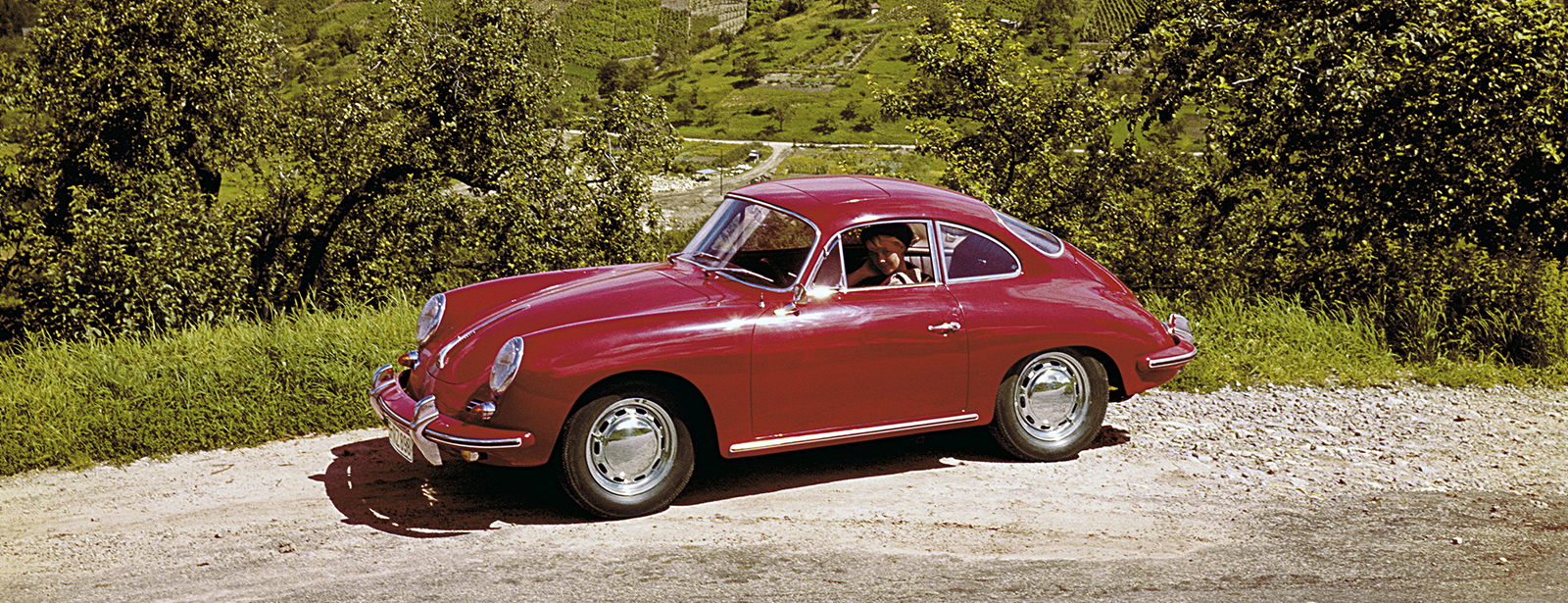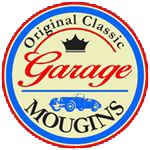
356 (1948-56)
On 8 June 1948, the first car to bear the Porsche name was road-certified: the Porsche 356/1 Roadster produced in Gmünd (in Carinthia, Austria).
The "Gmünd Roadster" was powered by a 1.1-liter air-cooled flat-four engine from Volkswagen. The engine's power was increased to 35 hp for the 356. The roadster weighed just 585 kilograms and reached speeds of up to 135 km/h (83 mph).
The original 356 (also called "pre-A" is easy to recognize from its two-piece windscreen divided by a center bar. This was replaced by a single-piece windscreen with a center bend as of model year 1952.
All 356 generations were also available in an open-top version (Cabriolet, Speedster or Roadster).

356 A (1956-60)
In model year 1956, the 356 was replaced by the comprehensively enhanced 356 A. As from its market launch, this type was available with five four-cylinder engines:
- 356 A 1300 with 44 hp
- 356 A 1300 Super with 60 hp
- 356 1600 with 60 hp
- 356 A 1600 Super with 75 hp
- 356 A 1500 GS Carrera with 100 hp
The modifications to the vehicle were part of "Technical Programme 1" (T1). One of the key visual differences between the A series and the original 356 was a single-piece, curved panoramic windscreen. The front indicators were always integrated in the horn grille and all models had a modified front lid handle with inset Porsche Crest. The tail lights were teardrop-shaped as of 03/1957.
The 1300 models were discontinued in model year 1958 (T2). The tailpipes of the 1600 models ended between the bumper guards to give more ground clearance. The chrome-plated housing with number plate lighting and reversing light was mounted below the number plate.
All 356 generations were also available in an open-top version (Cabriolet, Speedster or Convertible D).
From the type 356 onwards, particularly sporty versions were given the additional designation "Carrera" and were powered by a Fuhrmann engine.
This power unit, named after designer Ernst Fuhrmann, was characterised by four overhead camshafts, which were driven by bevel-gear shafts. The engine also featured a dual ignition with two separate distributors.

356 B (1960-64)
In model year 1960, the 356 A was replaced by the completely redesigned 356 B (T5). Its power spectrum ranged from 60 hp in the 356 B 1600 to 140 hp in the 356 B 2000 GS-GT Carrera 2.
The key visual differences between the B series and the previous model included the front bumper with enlarged rim guards, which was positioned approx. ten centimetres higher, and the headlights, which were also positioned much higher. The horn grilles next to the further-protruding front indicators were flatter and featured two chrome-plated slats. The front lid handle was also wider at the bottom. The two lamps for the number plate lighting were integrated in the higher-positioned rear bumper, while the reversing light was mounted below the bumper.
For model year 1962 (T6), the 356 B received a front lid that had been significantly widened at the bottom and a tank cap in the front right wing. Two vertical ventilation grilles were integrated in the enlarged bonnet.
All 356 generations were also available in an open-top version (Cabriolet, Speedster or Roadster).
From the type 365 A onwards, particularly sporty versions were given the additional designation "Carrera" and were powered by a Fuhrmann engine.
This power unit, named after designer Ernst Fuhrmann, was characterised by four overhead camshafts, which were driven by bevel-gear shafts. The engine also featured a dual ignition with two separate distributors.

356 C (1964-65)
In model year 1960, the 356 A was replaced by the completely redesigned 356 B (T5). Its power spectrum ranged from 60 hp in the 356 B 1600 to 140 hp in the 356 B 2000 GS-GT Carrera 2.
The key visual differences between the B series and the previous model included the front bumper with enlarged rim guards, which was positioned approx. ten centimetres higher, and the headlights, which were also positioned much higher. The horn grilles next to the further-protruding front indicators were flatter and featured two chrome-plated slats. The front lid handle was also wider at the bottom. The two lamps for the number plate lighting were integrated in the higher-positioned rear bumper, while the reversing light was mounted below the bumper.
For model year 1962 (T6), the 356 B received a front lid that had been significantly widened at the bottom and a tank cap in the front right wing. Two vertical ventilation grilles were integrated in the enlarged bonnet.
All 356 generations were also available in an open-top version (Cabriolet, Speedster or Roadster).
From the type 365 A onwards, particularly sporty versions were given the additional designation "Carrera" and were powered by a Fuhrmann engine.
This power unit, named after designer Ernst Fuhrmann, was characterised by four overhead camshafts, which were driven by bevel-gear shafts. The engine also featured a dual ignition with two separate distributors.



